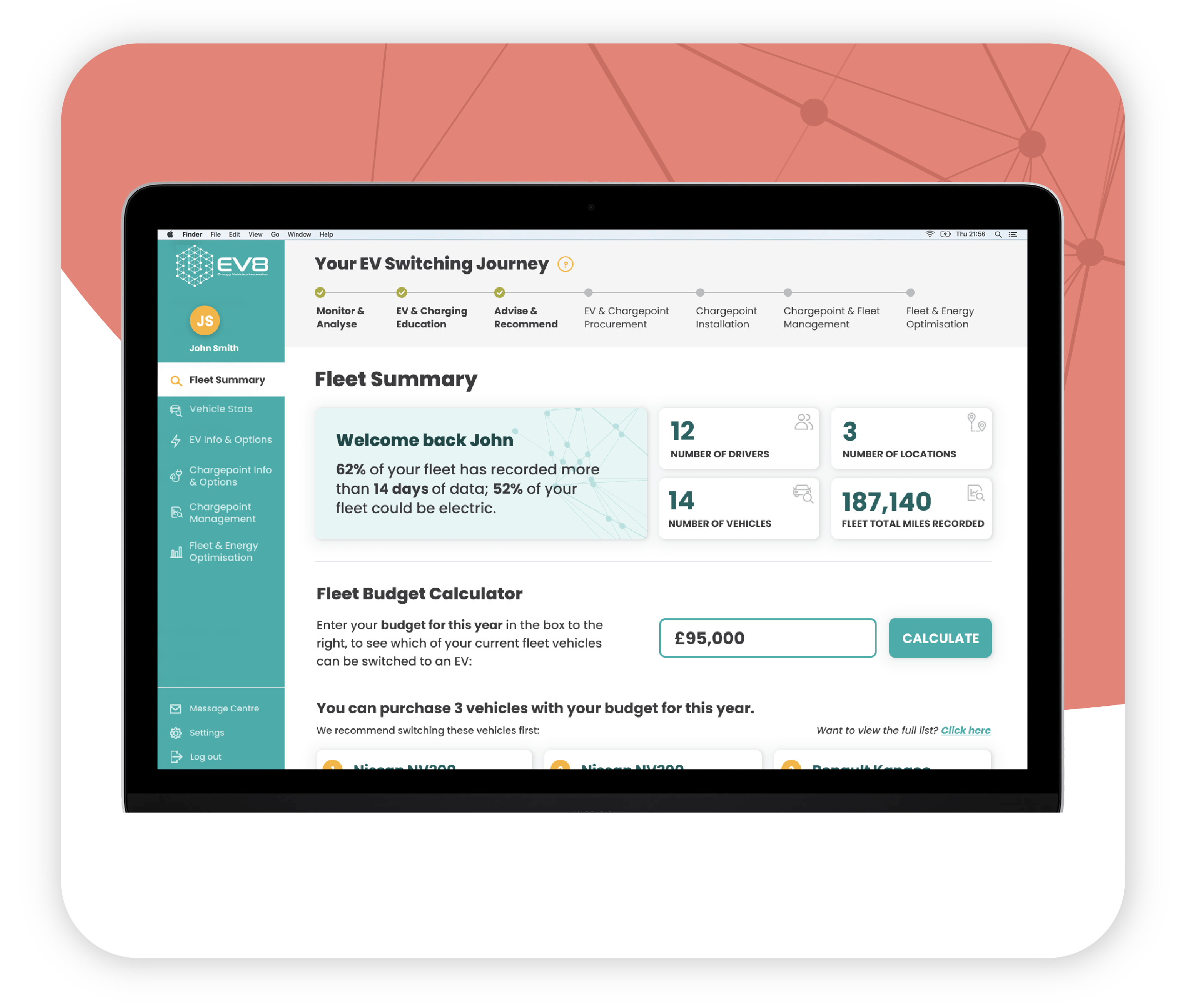Supporting fleets through their EV transition journey
EV8 Switch for Fleets is designed to support fleets with the transition from combustion to electric vehicles. It enables fleet operators to identify which combustion vehicles would be most suitable to transition to EV, without compromising fleet operations, enabling fleets to transition to electric as easily as possible. Crucially, EV8 Switch for Fleets provides independent, personalised insights based on real-world driving of fleet vehicles.
The dashboard provides fleet operators with insights both at a fleet level or individual vehicle level. Data can be collected from vehicles either using the EV8 Switch phone application, which interfaces directly with the portal, or using vehicle telemetry. The data collected is analysed, building up a picture of vehicle and fleet range requirements and driving patterns.
EV8 Switch then calculates a ‘Switchability’ score which outlines projected cost savings, charging requirements, range capabilities, and emission savings. This information is displayed in further detail through the fleet management dashboard. The fleet portal also suggests a range of EVs which would be suitable to meet fleet requirements based on operation needs.
Vehicle Range and Charging
EV8 Switch builds up a picture of travel patterns, calculating average daily mileage and identifying which EV would be most suitable to transition to. It also provides insights into fleet charging requirements, taking into consideration charging capacity onsite and analyses the availability of charging on route.
Projected Cost Savings
Could the fleet benefit financially from transitioning to electric? EV8 Switch allows fleet managers to understand the total cost of ownership for transitioning to electric based on their actual driving patterns and needs.
Emission Savings
EV8 Switch enables fleet operators to discover what emission savings can be made by the fleet transitioning from combustion to electric. This includes CO2 savings, along with potential air quality improvements which could be achieved from NOx and Particular Matter (PM) improvements.

